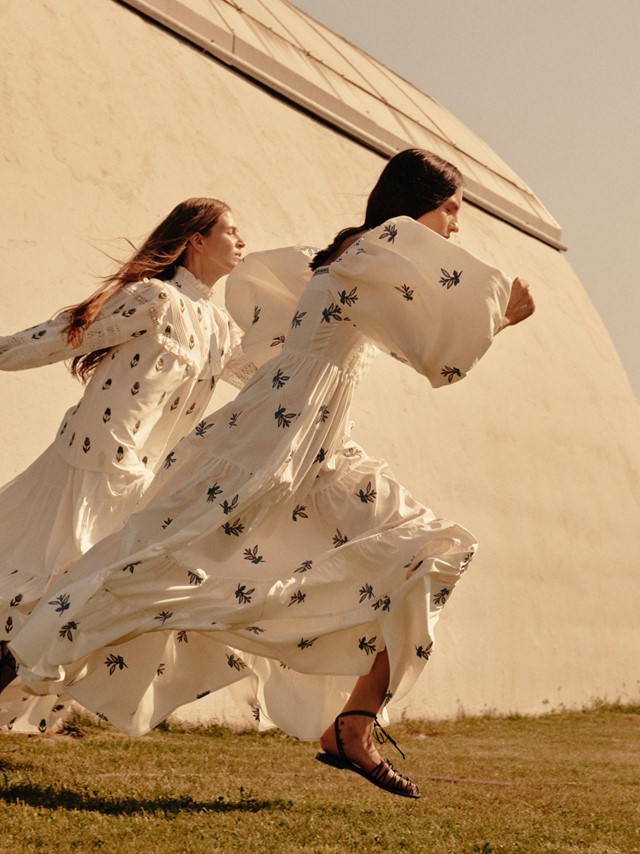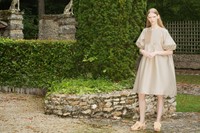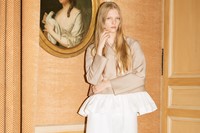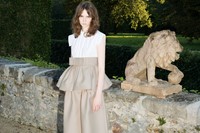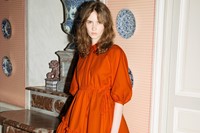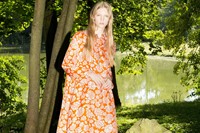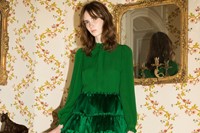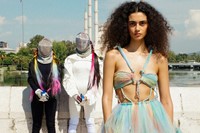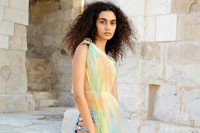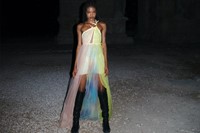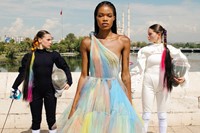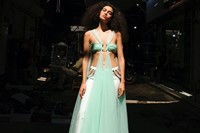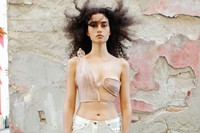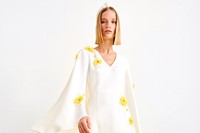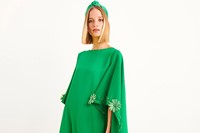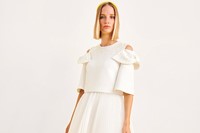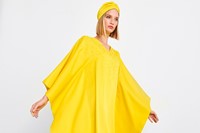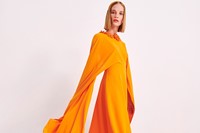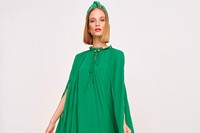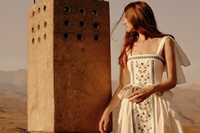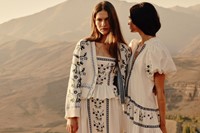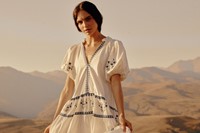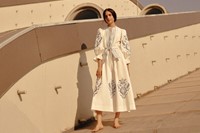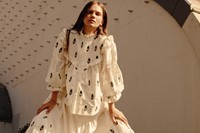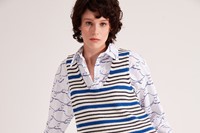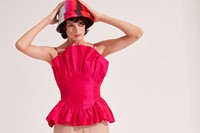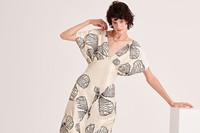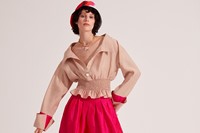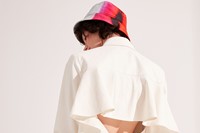After 18 months of Covid-19, the Turkish capital’s designers offer up a celebration of life, nature and their nation’s traditional handicrafts
Dice Kayek
As far as Turkish fashion goes, Dice Kayek is an institution. Founded by sisters Ece and Ayşe Ege in 1991, the brand is known for its feminine, structural and architectural designs, which Ece has described as “modern romantic”. The label’s Spring/Summer 2022 collection is in many ways a response to the Covid-19 pandemic and the lockdowns it ensued. “I missed nature, everything nature,” says Ece. “So I turned that into this collection, which is mainly bright colours. It’s a little bit unlike me because I love white, black and navy blue. But I wanted all these beautiful floral colours.” Taking inspiration from flowers – specifically sunflowers – the sun and the sea, the collection is a breath of fresh air, with beautiful embellishment and embroidery throughout, along with references to 18th-century shirting and 1970s silhouettes.
Sudi Etuz
The first thing we learn about Şansım Adalı is that she collects Barbies – she has hundreds of them in her showroom, all kept in pristine condition, safe inside their (defiantly unopened) boxes. Something of Barbie’s hyper-femininity is present in Adalı’s brand, Sudi Etuz, which she tells me has been described as “street couture”. The designer’s Spring/Summer 2022 collection comprises of fun, feminine but street-ready pieces crafted from tulle, sustainable denim and linen, and recycled polyester. However there’s a fantastical edge to the Sudi Etuz world, too – the collection was presented via a film, shot in Adalı’s hometown of Adana, that represents a modern retelling of the Legend of Anavarza, where two suitors battle for the affections of the king’s beautiful daughter.
Nihan Peker
Nihan Peker is another very feminine brand. Founded in 2010, this label is popular throughout the Middle East, celebrated for its gowns which the designer describes as “prêt-à-couture”. This season, Peker dedicated the collection to her mother, taking inspiration from her favourite flower: the daisy. It’s colourful therefore, filled with bright hues of yellow, orange and green, as well as pink and purple. “I believe this collection brought me one step closer to what I wanted to do and found myself inside it,” says the designer, “a collection of women with the most glamorous luxury with the simplest but finest craftsmanship.”
Lug Von Siga
Undoubtedly one of the highlights of the week was Lug Von Siga. Also founded in 2010 by Gul Agis (Lug Siga is an acronym of the designer’s name), this brand has an interesting relationship with time: it is rooted in the present, and contemporary in look and feel, but looks to the past, drawing on Turkey’s traditional handicrafts. And yet at the same time, Agis’ is adamant that her designs – which are stocked at Matches Fashion – should be thought of as timeless. And that’s exactly how they look. Featuring lots of beautiful embroidery, this new collection directly explores the idea of time – specifically ideas of oldness and newness, fastness and slowness – while looking to the region of Anatolia, where the film was shot.
Mehtap Elaidi
Mehtap Elaidi is another designer who draws on Turkey’s traditional handicrafts. Describing her clothes as “timeless but for the unapologetic woman”, Elaidi uses bold colours and patterns, wanting women to take up space in a country where women still face many challenges. (Elaidi actually works with NGOs to employ women to create her garments, helping them achieve economic independence.) Sustainability is a key part of her brand too – she sources her materials locally, working with local artisans too. Her Spring/Summer 2022 collection takes inspiration from her childhood growing up in the 60s and 70s, in Kalamis – a district on the Asian side of Istanbul, right by the Bosphorus sea. Prints feature anchors, shells, boats and olive branches, while embroideries resemble childhood drawings – some of which are the designer’s own – which have been lightly abstracted.
Special thanks to Swissôtel The Bosphorus Istanbul.
